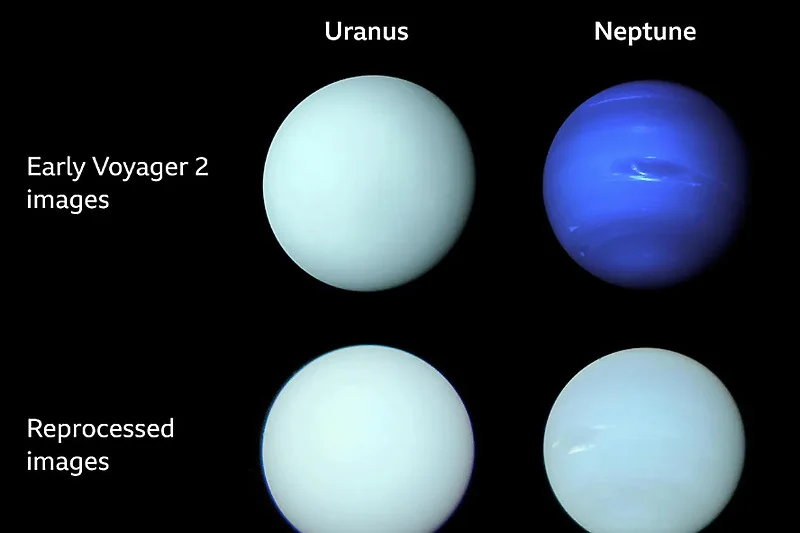Our ideas about the colors of Neptune and Uranus were incorrect, reveals research led by British astronomers. Images from a space mission in the 1980s showed that Neptune is richly blue, while Uranus is green.
However, the study found that both icy giant planets have similar shades of bluish-green. It turned out that earlier images of Neptune had been enhanced to show details of the planet’s atmosphere, altering its true color.

Astronomers have long known that most modern images of these two planets do not accurately reflect their true colors, says Professor Patrick Irwin from the University of Oxford, who led the research.
“Although artificially enhanced color was known among planetary scientists at that time, and the images were published with explanations that clarified this, that distinction has gradually faded over time,” he explained.
Robert Massey, Deputy Director of the Royal Astronomical Society (RAS), explained that improving images is a standard procedure in astronomical research.
“You’d be foolish to look at an astronomical image and not think it’s been enhanced. They have to be because they’re processed to bring out things. It’s not like there was some conspiracy to hide it from the public!” Massey said.
Professor Irwin and his team processed the original data to produce what is claimed to be the “most accurate representation to date” of the colors of Neptune and Uranus.
The initial misconception arose because images of both planets taken by NASA’s Voyager 2 spacecraft recorded their images in three different colors.
The images were recombined to create composite color images, which were not always accurately balanced. Contrast was also heavily enhanced to highlight details in the planets’ clouds, bands, and winds. In the case of Neptune, both processes made it appear bluer than it actually was.
In a recent study, researchers utilized data from the Hubble Space Telescope Imaging Spectrograph and the Multi Unit Spectroscopic Explorer on the Very Large Telescope of the European Southern Observatory.
In both instruments, each pixel represents a continuous spectrum of colors, enabling researchers to generate the true colors of both planets.
The analysis revealed that Uranus and Neptune have similar shades of bluish-green, although researchers found a slight difference. Neptune has a subtle hint of additional blue, attributed to a thinner layer of haze on the planet.
The study also showed that Uranus appears slightly greener during summer and winter when one of its poles is directed towards the Sun. However, during spring and fall, when the Sun is above the equator, it has a bluer hue. The research was published in the Monthly Notices of the Royal Astronomical Society, as reported by the BBC.






Leave a Reply